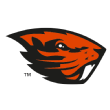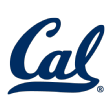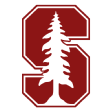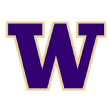As the fall inches closer, it is becoming increasingly difficult to see the college football season going off as planned. Maybe more nonconference games get canceled, maybe the entire season moves to the spring. The country's coronavirus response, and the fact that a lot of colleges appear to be moving toward online classes for this fall, put basically everything in doubt.
If nothing else, though, read these previews as a time capsule of sorts. Here's what we would have been talking about in a normal summer. And in said normal summer, the Pac-12 North had quite a few interesting plot lines swirling around. You had Oregon State looking to fulfill last year's promise of making the bowl game the Beavers so narrowly missed in 2019. You had Cal returning quite a bit from a team that was constantly banged up last year. You had Stanford looking for a bounce back after getting devastated by injuries and turnover. You had Wazzu replacing Mike Leach with Mike Leach 2.0. And you had both Washington and Oregon returning potentially devastating defenses and giving new offensive coordinators lots of intriguing pieces (and no surefire QBs).
Jump to: Oregon State | California | Stanford
Washington State| Washington | Oregon
Oregon State

Head coach: Jonathan Smith (7-17, third year)
2019: 5-7 (4-5 in Pac-12), 65th in SP+
2020 projection (in a normal universe): 5-7 (3-6), 76th
Five best returning players: LB Hamilcar Rashed Jr., LB Omar Speights, RB Jermar Jefferson, NB Jaydon Grant, WR Trevon Bradford
Oregon State lost 31-28 to Hawaii, 31-28 to Stanford, 54-53 to Washington State. In search of their first bowl since 2013, Jonathan Smith's Oregon State Beavers came about as close as you can come without actually pulling it off. Three losses by a combined seven points kept them from the promised land. (Or at least the Cheez-It Bowl.)
The Wazzu loss was particularly cruel: Having won three of four games to get back to .500, the Beavers were within one win of the postseason, and they clawed back from 10 points down midway through the fourth quarter to take a late 53-42 lead. But Wazzu scored two TDs in the final 130 seconds. No win, no bowl.
Inheriting a program that had won seven games in three years, Smith, a former Boise State and Washington assistant (under now-retired head coach Chris Petersen), worked through a two-win debut while laying the foundation for a thrilling offense. OSU improved from 73rd to 35th in offensive SP+ last year, sporting a high-efficiency passing game (Jake Luton completed 67% of his passes with a 28-to-3 TD-to-INT ratio) with brilliant red zone execution -- the Beavers were first in FBS in average points scored per scoring opportunity. They jumped from 126th to 93rd on defense as well. If not for the what-ifs, five wins would have been cause for celebration.
Things might get tricky this fall. While a seasoned defense returns one of the more exciting linebacking corps in the country, the offense starts over without Luton and six other starters, including their leading rusher (Artavis Pierce), leading receiver (Isaiah Hodgins) and three linemen. Coordinator Brian Lindgren has some former star recruits who could be ready for larger roles -- quarterback Tristan Gebbia, receiver Tyjon Lindsey, Washington transfer Trey Lowe, Florida State transfer Tre'Shaun Harrison (if eligible) -- and wideout Trevon Bradford returns after missing 2019 with a foot injury. But most of the pieces responsible for last year's improvement are gone.
That puts some pressure on defensive coordinator Tim Tibesar to keep ratcheting up the improvement. The potential appears pretty high. Linebacker Hamilcar Rashed Jr. racked up 22.5 TFLs and 14 sacks last fall, and four other linebackers managed at least 5.5 TFLs as well (five if you include Andrzej Hughes-Murray's 2018 output). Losing man-mountain Elu Aydon up front hurts, but most of the other linemen are back.
The secondary was inconsistent last year but does return a versatile nickel back in Jaydon Grant and active corners in Isaiah Dunn and Nahshon Wright. If Oregon State again features an above average pass rush, these guys should take advantage.
The offense will have to overachieve projections for the Beavers to make another run at a bowl. Projected 76th overall in SP+, OSU takes on four top-30 teams and five more in the top 60. There are quite a few relative tossups but almost no sure wins. This should again be a competitive and fun squad, but the transition and schedule strength might each be a little too difficult to overcome.
California

Head coach: Justin Wilcox (20-18, fourth year)
2019: 8-5 (4-5), 74th in SP+
2020 projection: 6-6 (4-5), 52nd
Five best returning players: LB Cameron Goode, QB Chase Garbers, LB Kuony Deng, RT Jake Curhan, DE Zeandae Johnson
Injuries can render a season's worth of data somewhere between questionable and worthless.
At the moment Cal quarterback Chase Garbers went down with a shoulder injury, the Golden Bears were 4-0 and tied with Arizona State, 7-7. After starting the season 64th in SP+, they were up to 49th.
When Garbers returned to the lineup against USC in mid-November, Cal was 5-4 and down to 73rd in SP+. The Bears were on their way to tying the game at 10-10 in the second quarter when he got hurt again. They collapsed and lost 41-17, falling to 82nd. He played the last three games, though, all wins. He looked spectacular in a 15-point Redbox Bowl win over Illinois.
Cal was 7-0 when Garbers played the entire game. Granted, only one of those wins was against a top-50 team (20-19 over Washington), but the Bears were still a top-50 team if you remove the other six games from the equation. But now you've cut a tiny 13-game sample almost in half! And that's before you figure out what to do with running back Christopher Brown Jr., who looked spectacular early and late in the year but spent most of the season limping off the field with a variety of maladies, or receiver Kekoa Crawford, who caught 10 balls for 185 yards in the 4-0 start but was in and out of the lineup after that. Cal finished 74th in SP+ but mostly with a team we weren't intended to see.
If this trio is mostly healthy in 2020, it's fair to think that their No. 52 projection above doesn't quite cover it. After all, Cal is scheduled to return 10 offensive starters, plus two more potentially game-changing receivers in Crawford and sophomore Makai Polk, who caught nine balls for 183 yards in the last two games after catching just 10 in the first 11.
As the offense grew hopeless midseason, the defense suffered glitches, too. The Bears fell from 13th in defensive SP+ in 2018 to 46th last year, but it was top 30 in that seven-game sample above. Wilcox has cornered the market on versatile defenders in the 6-foot-4 or 6-foot-5, 260- to 280-pound range, and he brings back a ton of them, plus 235-pound ace edge rusher Cameron Goode. They do have to replace all-world linebacker Evan Weaver, who made over 20% of Cal's tackles. They also lose last year's top four safeties, which, considering Cal's biggest strength was big-play prevention, might not be a positive development. Wilcox has a track record on D, but this one might not be his best.
With Cal projected 52nd, the schedule is fascinating, featuring seven games projected within a touchdown. They're only favored in five, but nine are within reach. If they indeed stay healthy and play at a top-40 level, though, then topping last year's win total becomes a distinct possibility. I don't think this is a North dark horse or anything, but Cal has solid odds of topping its projections.
Stanford

Head coach: David Shaw (86-34, 10th year)
2019: 4-8 (3-6), 88th in SP+
2020 projection: 6-6 (4-5), 48th
Five best returning players: LT Walker Little, QB Davis Mills, RT Foster Sarell, DE Thomas Booker, CB Paulson Adebo
In 2019, Stanford collapsed in about every possible way. The offense ranked 74th in offensive SP+, its worst output since 2007. The defense collapsed to 87th, worst since 1998. Hell, even special teams abandoned David Shaw's team -- after ranking in the special teams SP+ top 10 for four straight years, the Cardinal fell to 52nd.
After winning at least eight games for 10 straight seasons, they managed only four. This wasn't supposed to be the best Shaw team, but instead it was by far the worst.
So what the heck happened? Injuries, for starters.
Quarterback K.J. Costello missed two-thirds of the year, and high-end replacement Davis Mills dealt with calf issues for most of October and November.
All-world left tackle Walker Little missed the whole year, only one lineman managed to start in all 12 games, and freshmen and sophomores made over 80% of those starts.
Two key linebackers and four defensive backs had missed time, including star corner Paulson Adebo. That was too much for a defense that already had to replace seven 2018 starters.
Even star kicker Jet Toner got hurt! (Granted, backup Ryan Sanborn mostly matched his output.)
Other units were dealing with offseason attrition and/or talent deficiencies of their own. The run game was miserable for the second straight year. The defensive line had a couple of active pieces but got pushed around constantly. Stanford managed to rank 115th in both rushing success rate and rushing success rate allowed.
Most of last year's key injured figures return: Mills, Little, Adebo, etc. Injuries can often create gluts of experience, which could mean good things for both the offensive line and secondary. The receiving corps is loaded with former star recruits -- juniors Michael Wilson, Connor Wedington and Osiris St. Brown, plus big-play sophomore Simi Fehoko -- who could shine. Plus, recruiting continues to be pretty good; Shaw signed ESPN's No. 21 in class in 2020 after ranking 20th in 2019.
The bad news: While injuries have wrecked many a season through the years, the depth of the stumble still means something. Stanford, the team with six AP top-15 finishes and two Rose Bowl titles since 2010, was 84th in SP+. That's Walt Harris' Tenure-level bad. Yes, they were playing a lot of second-stringers, but strong programs usually have better second-stringers. And now Shaw has to deal with the loss of 14 players to the transfer portal; no, most of them weren't stars, but that's not going to help apparent depth issues.
All of this makes 2020 (such as it exists) the biggest year in Shaw's tenure. He has proven entities and young players with upside everywhere. But he did last year, too. Stanford is almost assured of a rebound, but can the bounce back match the magnitude of the fall? It better, because not only do they play four teams projected in the SP+ top 25, but they also play four more teams between 47th and 60th. They were 1-5 against top-60 teams last year.
Washington State

Head coach: Nick Rolovich (first year)
2019: 6-7 (3-6), 28th in SP+
2020 projection: 7-5 (4-5), 47th
Five best returning players: RT Abraham Lucas, LB Jahad Woods, RB Max Borghi, RG Josh Watson, DT Will Rodgers III
Nick Rolovich puts off serious Most Interesting Coach in the World vibes. He's a genuinely interesting interview. He's not afraid to pick a fight with other coaches when they deserve it. He has Cammon Cooper and redshirt freshman Gunner Gruz, who are both big, plus-athletes, and Rolovich held onto Leach commit Jayden de Laura, the latest Honolulu St. Louis High product, for the 2020 class. And while last year's top three wideouts are all gone, three others with 40+ catches (Renard Bell, Tay Martin, Travell Harris) return, as does Jamire Calvin, who caught 42 balls in 2018.
Leach also left Rolovich with a unique gift in Max Borghi, who gained 1,414 yards (with a 56% success rate) with 16 touchdowns in a combined 127 rushes and 86 catches. He's one of the conference's best efficiency weapons. So is nearly error-free right tackle Abraham Lucas.
Rolovich never really got Hawaii's defense figured out -- his best D ranked 113th in defensive SP+ -- and after a few years of improved output, Leach's last Wazzu defense slumped to 95th last fall.
Good luck, then, to Jake Dickert. Wazzu's new defensive coordinator spent the last three seasons helping Craig Bohl field three straight top-40 defenses at Wyoming; he was coordinator in 2019, when the Cowboys peaked at 33rd.
The more of Wyoming's culture that rubs off on this defense, the better. While Dickert inherits a nice stable of linebackers, led by senior Jahad Woods, the Cougs lack in the front and the back. Tackle Will Rodgers III is the only returning lineman to log at least 300 snaps, and both starting cornerbacks are gone as well. Rolovich didn't add a ton of transfers but did bring in a couple of JUCOs and South Dakota safety Phillip Powell, who had 10 passes defensed last year.
(Also, in April, free safety Bryce Beekman died of a fentanyl and promethazine overdose. For obvious reasons, it feels strange mentioning death in the flow of a preview, and I apologize for it to those feeling real-life grief from the tragedy.)
Wazzu is projected 47th overall in SP+ and is either a favorite or slight underdog in each of its first 10 games. If Rolovich figures out the QB position and Dickert improves the defense at least a smidge, the Cougs have a shot at a really nice season out of the gates.
Washington

Head coach: Jimmy Lake (first year)
2019: 8-5 (4-5), 16th in SP+
2020 projection: 8-4 (6-3), 24th
Five best returning players: DT Levi Onwuzurike, NB Elijah Molden, RG Jaxson Kirkland, WR Ty Jones, LB Joe Tryon
Jimmy Lake, handpicked choice of retiring (for now) great Chris Petersen, inherits a Washington program that has averaged an SP+ ranking of 10.8 over the past four seasons and has signed three top-15 classes in a row. Lake has benefited both from nearly a decade of tutelage under Petersen and from the knowledge that he made Petersen better. In his four years as defensive coordinator or co-coordinator, Washington twice ranked in the defensive SP+ top-five.
Now he just has to rediscover Washington's killer instinct. After going 7-7 in games decided by one score from 2016-18, they went 0-4 in 2019. They won eight games by an average of 23.8 points and lost five by an average of 5.2.
Longtime defensive assistant Pete Kwiatkowski stuck around to become Lake's coordinator, which was undeniably good news, but Lake had an opportunity to make a change on offense, and I'll be honest, his choice was a bit strange: He asked John Donovan to become his offensive coordinator. Donovan, a longtime James Franklin assistant, was fired by Franklin in 2015 to make way for Joe Moorhead's innovative RPO attack. He spent the past four years as an analyst and assistant for the Jacksonville Jaguars.
There's always a chance that Donovan has spent the past four years stocking up on great ideas. Nearly every great coach has failed at some point, after all, and rebounded. He inherits a blank canvas of sorts -- lots of intriguing pieces but few known stars. At quarterback, he'll choose between three former blue-chippers (sophomore Jacob Sirmon, redshirt freshman Dylan Morris, freshman Ethan Garbers) and an intriguing transfer in Sacramento State's 3,200-yard passer Kevin Thomson.
In the skill corps, he has efficient options in running backs Richard Newton and Sean McGrew, wideouts Ty Jones and Terrell Bynum and tight end Cade Otton. He also has loads of high-upside youngsters: sophomore WRs Puka Nacua and Marquis Spiker, freshmen WRs Jalen McMillan and Rome Odunze, freshmen RBs Cameron Davis and Sam Adams II. The line returns only two starters, but whatever Donovan's vision is, he should have the pieces to try to execute it. Will it work?
The Huskies slipped to 24th in defensive SP+ after losing a ton of stars after 2018, but they return both proven stars and more seasoned sophomores. The pass rush needs to improve -- UW was only 54th in sack rate, 82nd on passing downs -- but the return of eight-sack Joe Tryon can't hurt. If QBs are under any sort of duress, the secondary will pounce; nickel back Elijah Molden (5.5 TFLs, 17 passes defensed) is dynamite, and sophomore corner Trent McDuffie could soon be one of the league's best.
The schedule features plenty of likely wins -- five games against teams projected 76th or worse in SP+ -- but two early games will determine the season's stakes. They're scheduled to host Michigan in Week 1 and go to Oregon in Week 5; go 1-1 or 2-0, and this is an NY6 bowl contender.
Oregon

Head coach: Mario Cristobal (21-7, third year)
2019: 12-2 (8-1), 15th in SP+
2020 projection: 9-3 (7-2), 13th
Five best returning players: LT Penei Sewell, DE Kayvon Thibodeaux, CB Thomas Graham Jr., WR Johnny Johnson III, LB Isaac Slade-Matautia
Six years ago, Oregon reached the CFP title game with a Heisman-winning quarterback. Four years ago, the Ducks were 4-8 and looking for a new head coach after a total defensive collapse got Mark Helfrich fired. Two years ago, they were on their third head coach in three years after Willie Taggart left for Florida State following a single season in Eugene. Mario Cristobal came in and had to rebuild a culture mostly from scratch.
Now, Oregon appears to once again be the Pac-12's most sturdy program and its best hope at a CFP run. Life changes, then it changes back.
Oregon's got a lot of new pieces to figure out on offense and hasn't exactly gotten an offseason of practice to figure them out. But the defense broke through last season and appears built to maintain progress.
Under new defensive coordinator Andy Avalos, the Ducks leaped from 50th to eighth in defensive SP+ in 2019, combining high-level pass defense with elite big-play prevention and red zone domination. Thirteen of the 17 players to log 200+ snaps return, too. Among that group are seniors such as corners Thomas Graham Jr. and Deommodore Lenoir, safety Brady Breeze and tackles Austin Faoliu and Jordon Scott, plus recent star recruits including DE Kayvon Thibodeaux, LB Mase Funa and FS Verone McKinley III and corner Mykael Wright. Cristobal has signed back-to-back top-15 classes, and the 2019 haul had an immediate impact.
The offense was a work in progress last year and should remain so without first-round quarterback Justin Herbert. There's potential, though. Running backs CJ Verdell and Travis Dye averaged a combined 10 yards per carry against Colorado, Washington State, Arizona State and Utah (and 4.7 in the other 10 games). Receiver Johnny Johnson III had five games with at least 87 receiving yards and one with 207. There's a host of recent star recruits that could be ready to contribute and, oh yeah, the Ducks have the best offensive lineman in college football in left tackle Penei Sewell.
There are two primary questions. First, who's the quarterback? Sophomore Tyler Shough looked good as Herbert's backup, and Cristobal added a solid dual-threat option in Boston College transfer Anthony Brown. New coordinator Joe Moorhead never quite had the QB he was looking for as Mississippi State's head coach -- Nick Fitzgerald couldn't throw well enough in 2018, and Garrett Shrader was a freshman in 2019; will Shough or Brown fit the bill?
Second, who lines up beside Sewell? Five linemen with a combined 202 career starts are gone, and no returning lineman besides Sewell logged even 70 snaps last season.
It's difficult to assume schedules will go off as planned, but Oregon was primed to get back-to-back home showcase games, welcoming North Dakota State and Ohio State in the first two weeks of the season. Still, the Ducks get Washington, USC, Arizona State and Stanford all at home in conference play, and that schedule likely takes them from favorite to healthy favorite in the North.
